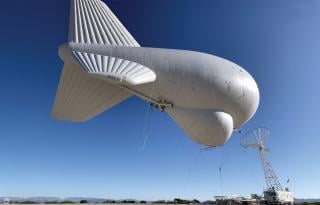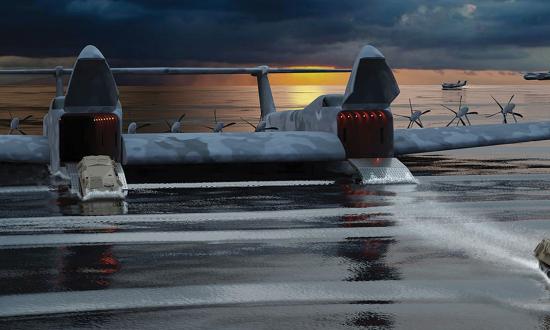It is not only China that is getting into balloon-based intelligence, surveillance, and reconnaissance (ISR). (See “Spy Balloons.”) A little-noticed provision of the 2023 National Defense Authorization Act (NDAA) directs that “not fewer than 1 tethered aerostat radar system, or similar technology” be provided to the Department of Homeland Security (DHS) “for use by the Coast Guard” to improve situational awareness regarding a variety of illegal activities in the Gulf of Mexico and along the Gulf Coast.
Section 11266 of the 2022 Coast Guard Authorization Act—which was rolled into the FY2023 NDAA—established the requirement for the tethered balloon’s installation at Coast Guard Station South Padre Island, Texas, near where the U.S.-Mexico border meets the Gulf. It was “subject to the availability of appropriations,” which were made available with the President’s signature on the 2023 Consolidated Appropriations Act in late December.
The Coast Guard is no stranger to tethered balloons. According to the Coast Guard Aviation Association, as the “War on Drugs” was heating up in the mid-1980s, the service established “maritime interdiction surveillance teams” (MISTs) as part of Operation Hat Trick. MISTs comprised TCOM Mobile Aerostat Platform aerostats tethered to cutters. The aerostats—helium-filled balloons—carried ISR equipment up to around 2,500 feet, from which altitude more than 11,000 square miles can be observed. Positioned near key choke points, Coast Guard and Navy ships (the latter of which included Coast Guard law enforcement detachments) used information obtained from the aerostats to inspect and interdict vessels suspected of running drugs.
The Coast Guard again employed TCOM aerostats along the Gulf of Mexico from the mid-1990s as part of the Tethered Aerostat Radar System (TARS) program. The 71M Low-Altitude Surveillance System aerostats were capable of much greater altitudes than Hat Trick’s, as much as 15,000 feet. This would have allowed a surveillance area greater than 200,000 square miles, although the aerostats typically did not operate that high.
As recently as 2018, the Coast Guard had an aerostat tethered at South Padre Island, but high winds damaged it, and the Coast Guard canceled the program.
TARS aerostats, built by ILC Dover in partnership with systems integrator TCOM, are still in service along the U.S. southern border but are now under the control of the Coast Guard’s sister DHS agency, U.S. Customs and Border Protection (CBP).
As 2022 turned to 2023, CBP installed the aerostat Argos at South Padre Island. While it appears the new aerostat will continue to be operated by CBP despite the NDAA’s “for use by the Coast Guard” language, the information it gathers nevertheless will have a tangible effect on Coast Guard operations in the southern and western Gulf of Mexico. CBP says the blimp will help the Coast Guard and other law enforcement agencies combat smuggling, drug and human trafficking, and illegal fishing—all among the service’s 11 statutory missions.







